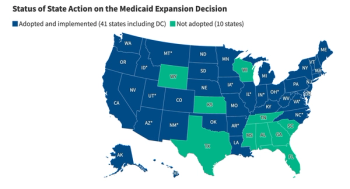
High-deductible health plans: a brief history
While the introduction of the Health Insurance Marketplace plans in 2014 has accelerated the trend of more Americans with HDHPs, the number of such plans was already increasing before then.
While the introduction of the Affordable Care Act’s (ACA) Health Insurance Marketplace plans in 2014 has accelerated the trend of more Americans with employer-based plans having HDHPs, the number of such plans was already increasing before then-from 5% in 2007 to 20% in 2013, according to a
“There is significant year-over-year growth in the number of employers switching to or adding these benefit offerings and employees choosing them,” says Ki Park, MBA, practice area head managed markets, Symphony Health Solu
tions. In fact, 44% of employers will only be offering high-deductible options over the next three years.
Taking a closer look at the statistics, in employer-based plans, specifically, 81% of members had a deductible in 2013, up from 52% in 2003, according to a Commonwealth Fund report, “
In terms of the growth and size, the share of privately insured adults with deductibles that are in the range of $1,000 to $3,000 rose from 7% in 2003 to 27% in 2014, according to a Commonwealth Fund report, “
In the health insurance marketplace, close to 60% to 80% of plans are HDHPs. These deductibles tend to be higher than those of HDHPs offered through employer-sponsored insurance, says Amelia M. Haviland, PhD, Carnegie Mellon University, Pittsburgh.
Newsletter
Get the latest industry news, event updates, and more from Managed healthcare Executive.





















































